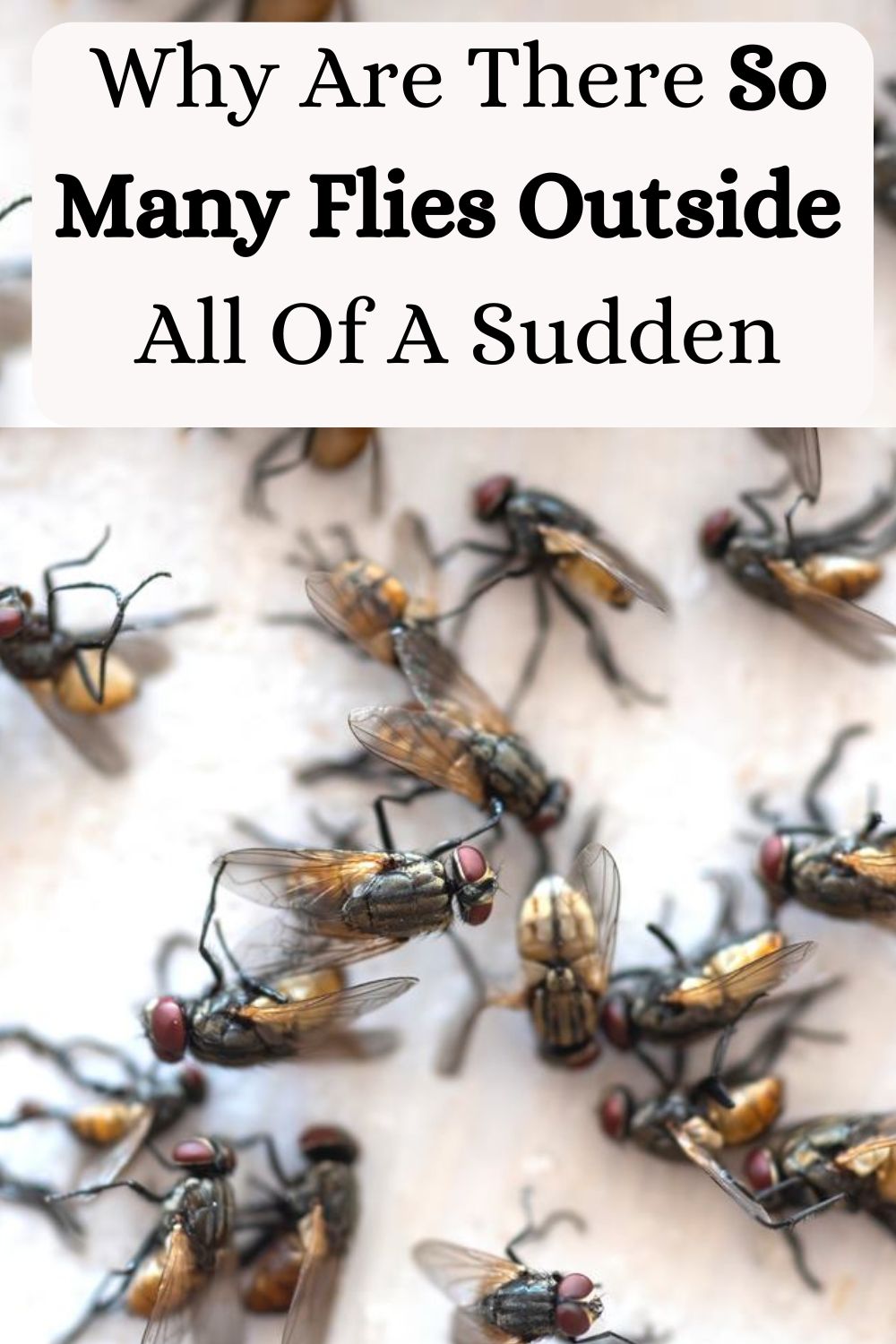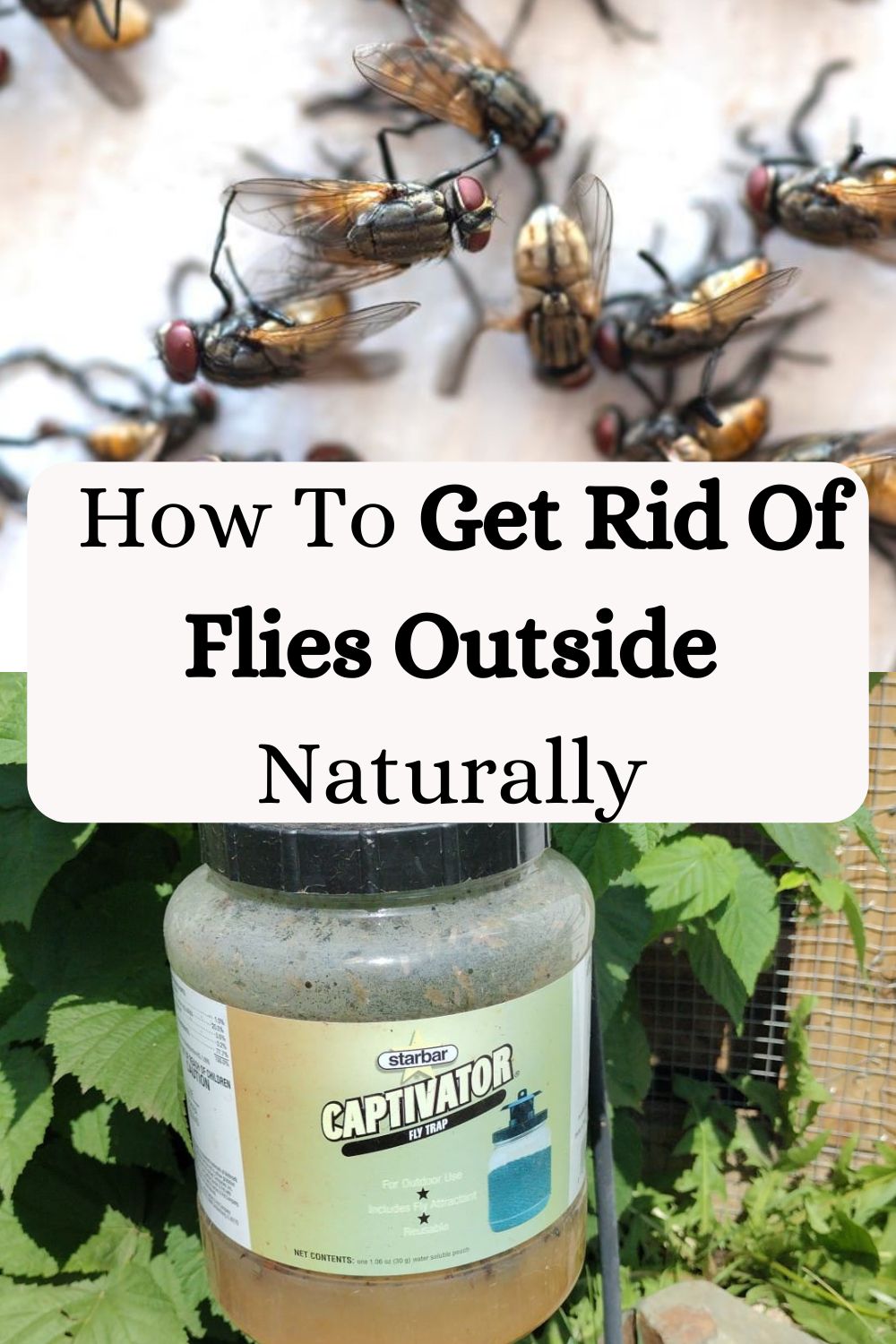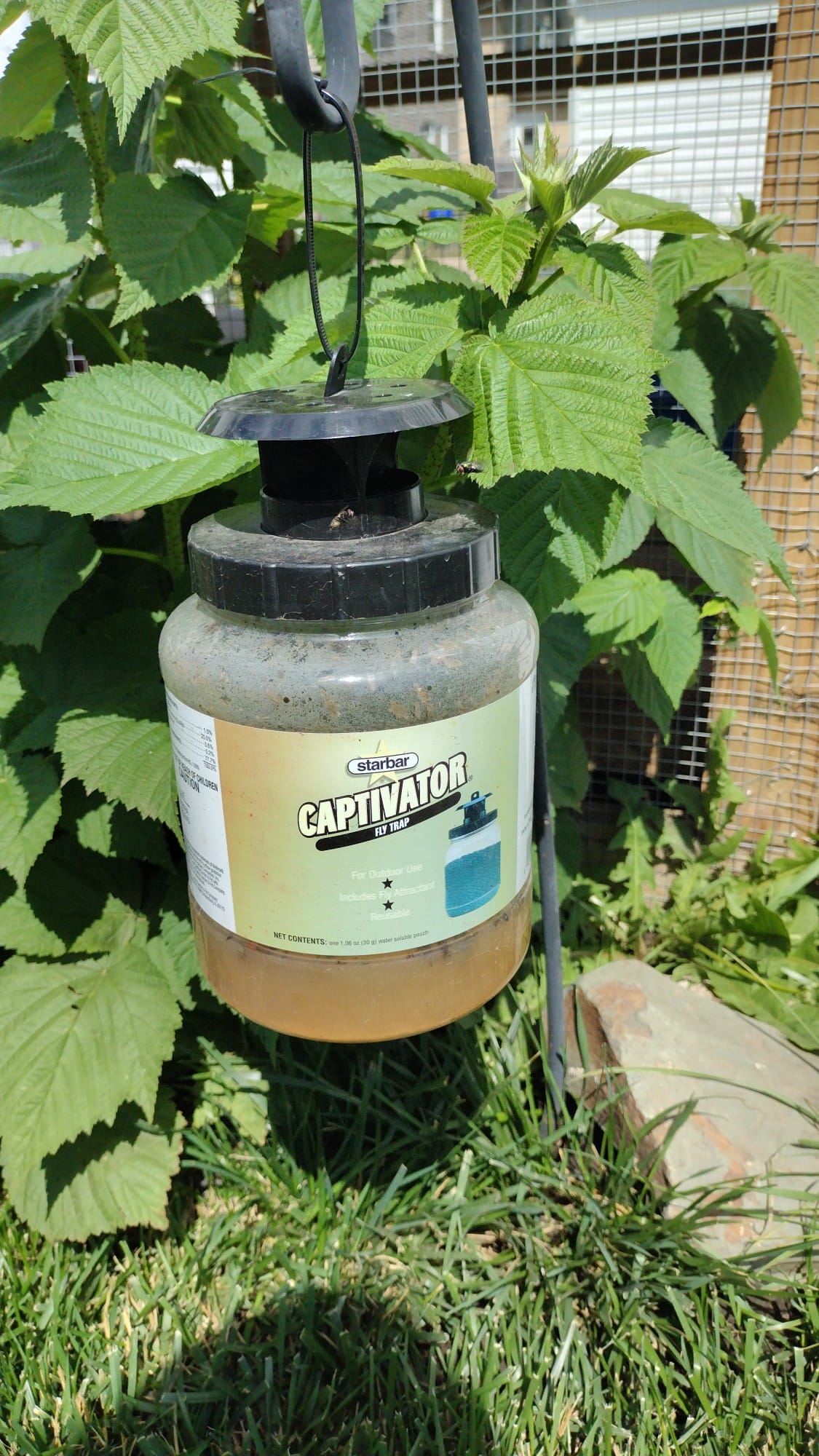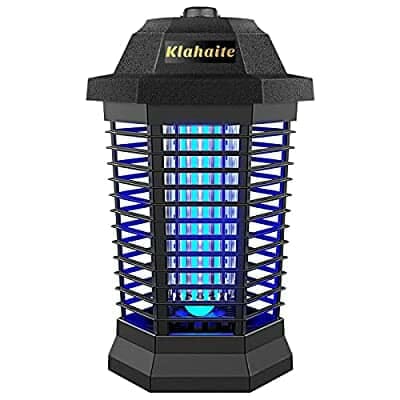Flies can disrupt an otherwise pleasant day outdoors as you barbeque in your backyard with your loved ones or engage in other fun activities. Aside from landing on and contaminating your food, flies just make the air around you unpleasant.
These disease carriers are especially active during the warmer months, which is quite annoying since this is when people want to enjoy the pleasant weather.
One or two flies flying around your outdoor spaces shouldn’t be a problem, but you must deal with a large population of these annoying critters.
Fortunately, there are effective strategies for how to get rid of flies outside instantly.
Keep reading to find out.
Why Are There So Many Flies Outside All Of A Sudden

Flies are typically associated with filth, so when you find them swarming in a particular area, you will naturally assume there’s something filthy there.
While that is true, you will find a lot of flies outside for other reasons.
1. Garbage
Trash cans provide flies with food as they contain decaying organic matter like rotting food, animal carcasses, and garbage which flies love to eat.
The organic matter inside your garbage cans starts decomposing, producing a pungent odor made up of compounds such as sulfides and amines.
Due to th flies’ high sensitivity to smell, they easily detect these odors and are drawn to garbage cans left outside.
The flies then lay eggs on the decaying matter, hatching into maggots that eat the decomposing material. Therefore, the fly population will keep growing, provided they have a reliable food source.
Also Read:
2. Animal Waste
Waste from animals such as birds, dogs, cats, and horses contains high organic and nutrient levels, perfect for flies to consume and breed in.
Therefore, if your neighborhood has many animals and their owners tend to leave their waste on the ground, you will likely see an increase in flies population.
Like food waste, flies will sense the smell of animal waste and also lay eggs on or near them, with the eggs growing into larvae and eventually flies. Besides animal waste, dead animals can also attract flies.
3. Moisture
Flies need water for survival, so areas with damp soil or standing water provide excellent breeding grounds for flies and drinking water.
These areas include birdbaths, outdoor pet bowls, and leaky faucets. Moist vegetation or soil gives larvae moisture and organic matter needed for their growth.
4. Temperature
Flies are less active when cold, so you will hardly see them in winter. However, when the temperatures increase and it gets warm in summer, they come out in large numbers.
The warm temperatures and longer daylight hours in summer provide ideal conditions for flies breeding and feeding. The environment regulates the body temperatures of flies because they are cold-blooded insects.
When temperatures rise, the flies’ metabolism increases, making them more active and able to fly and mate.
Moreover, summer offers abundant organic matter, such as decaying plant matter and animal waste, which provides flies with food. This increased availability of food helps to support a larger flies population.
In addition, longer daylight hours in summer give flies more time to feed and mate. This results in more rapid population growth and an increase in flies outdoors
5. Compost
Composting creates a rich soil amendment through the natural decomposition of organic substances such as food waste. This practice is environmentally friendly but can attract flies if mismanaged by providing them with food and moisture.
Flies will breed in compost, left uncovered or too wet. Decomposing organic matter’s smell attract flies, and will lay eggs on or near the compost pile.
Read: How to get rid of mosquitoes in yard
Dangers Of Flies Outside
Below are the reasons you should strive to keep your outdoor spaces fly-free.
a) Disease Transmission
Flies transmit diseases, such as salmonellosis, typhoid fever, cholera, shigellosis, E.coli, tularemia, anthrax, and myiasis to animals and humans.
They transmit these diseases through direct contact, contaminating surfaces, or carrying pathogens on their bodies.
If flies land on your food preparation surfaces or food, they can contaminate them with feces and bodily fluids like saliva.
Consuming contaminated food puts you at risk of different diseases. Also, some flies, like deer flies and horse flies, bite animals and humans, transmitting pathogens through their saliva.
b) Allergic Reactions
Flies can carry and spread various allergens, including pollen, dust, mold spores, and animal dander. If exposed to these allergens, you may experience a runny nose, skin rashes, sneezing, itchy eyes, and other symptoms.
In addition, if you are allergic to flies’ saliva or feces, you may suffer an allergic reaction when a fly lands on your food, leaving behind tiny particles of its saliva or feces.
Furthermore, some flies, like the black fly or the deer fly, cause an allergic reaction called “black fly fever” or “river blindness” in some people.
A parasitic worm transmitted by the bites of these flies causes this condition and can lead to symptoms such as itching, swelling, fever, and skin rashes.
c) Damage to Crops
Onion flies, fruit flies, hessian flies, leafminers, and corn flies damage crops by feeding on them. For instance, onion flies feed on onion plants and bulbs, while hessian flies eat wheat crops.
d) Parasitism
Some flies, like botflies and tsetse flies, are parasitic, infesting animals or humans, leading to potential health issues and discomfort. For instance, tsetse flies cause sleeping sickness.
How To Get Rid Of Flies Outside Instantly
There are numerous ways of instantly getting rid of flies outside. However, before adopting any strategy, clean and tidy your outdoor spaces, including your porch or patio.
Also, remove pet waste, seal garbage bags and cans, remove standing water and repair leaky faucets.
1) Using Fly Swatter
A fly swatter, used to capture or kill flies, features a flat, round, or rectangular surface, usually plastic or metallic and is attached to a handle.
Its surface may have a mesh or perforated design to trap the flies.
This common household item effectively controls the fly population in kitchens, outdoor patios, and picnic areas.
Using fly swatter to get rid of flies outside is eco-friendly, cost-effective, easy to use, and non-toxic.
2. Set Up A Captivator Fly Trap
The Captivator Fly Trap is an effective commercial option that uses attractants to lure flies into the trap where they can’t escape.
Instructions:
- Assemble the Trap: Follow the instructions on the package to assemble the trap.
- Add Attractant: Fill the trap with the provided attractant and water. The smell will attract flies.
- Place the Trap: Hang or place the trap in areas with high fly activity, preferably in the sun and away from living areas to avoid odors.
- Monitor and Maintain: Check the trap regularly and dispose of the contents as needed. Refill with attractant to keep the trap effective.
3) Fly Tape, Fly Ribbon Or Sticky Fly Paper
This insect trap captures and kills flying insects like flies, gnats, and mosquitoes. It comprises a long paper or plastic strip coated with a sticky substance, usually adhesive or glue.
The tape is typically yellow because this color attracts most flying insects. This simple method effectively controls fly populations, so it is commonly used in businesses, homes, and outdoor spaces like picnic areas and patios.
Using fly tape is also environmentally friendly and safe since it doesn’t emit harmful chemicals. However, you’ll need to replace it often, and it isn’t aesthetically appealing.
4) Bug zapper (Electric Insect Killer)
This device kills flying insects like mosquitoes and flies. A bug zapper has an electrically charged metal mesh or grid that electrocutes and kills the insect upon touching it. Click here to see today’s price on Amazon.
Bug zappers come in different sizes and shapes, and you can use them to trap flies both outdoors and indoors. Depending on its design, you can place your bug zapper on a flat surface, hang it from your ceiling, or mount it on a pole or stake outdoors.
These devices effectively kill flying insects but are annoying since they are noisy and emit a bright light. In addition, they can kill beneficial insects like butterflies and bees, thus affecting the environment negatively.
5) Essential Oils
You can repel flies using essential oils such as citronella, eucalyptus, peppermint, lavender, or tea tree oil. These essential oils have unpleasant natural scents flies don’t like, so they stay away when they smell them.
Dilute your chosen essential oil (5 to 10 drops) with an ounce of water or carrier oil like olive oil or coconut oil, put the solution in a spray bottle, then spray the areas flies like to congregate.
Alternatively, add some drops of essential oil to an oil burner or a diffuser, then place it outdoors.
6) Vinegar Trap
Mix equal proportions of water and vinegar in a jar, then add a few drops of dish soap. The vinegar will attract the flies, which then drown in the solution.
7. Light-Based Fly Traps (Fly Lights Or UV Insect Traps)
These traps attract and trap flying insects like flies, moths, and mosquitos using ultraviolet (UV) light. Light-Based Fly Traps usually have a UV light-emitting fluorescent bulb, a light-directing reflector, and a sticky or electrified surface to trap the insects.
You can use a light-based fly trap to eliminate flies and other flying insects in your indoor and outdoor areas. These include your outdoor dining spaces, patios, and kitchen. In addition, it is ideal for barns and other agricultural settings.
Note
Citronella candles and fans also help eliminate flies from your outdoor spaces.
Final Remarks
Although getting rid of flies outside can be challenging, adopting proven proactive and preventative measures will make your work easier.
Therefore, if you wish to enjoy your backyard without flies bugging you, keep your surroundings clean and use the methods discussed above to eliminate them.

Hey there, I’m Derek Schew, a writer for Lawnholic.com, where we cover everything and anything related to lawns. As someone who’s spent countless hours tending to my own lawn, I’m passionate about sharing my knowledge and helping others achieve the perfect yard. From lawn care tips to product reviews, I’m committed to providing our readers with the most accurate and up-to-date information available. So whether you’re a seasoned lawn enthusiast or just getting started, I invite you to join our community and discover the joys of a lush, green lawn.




